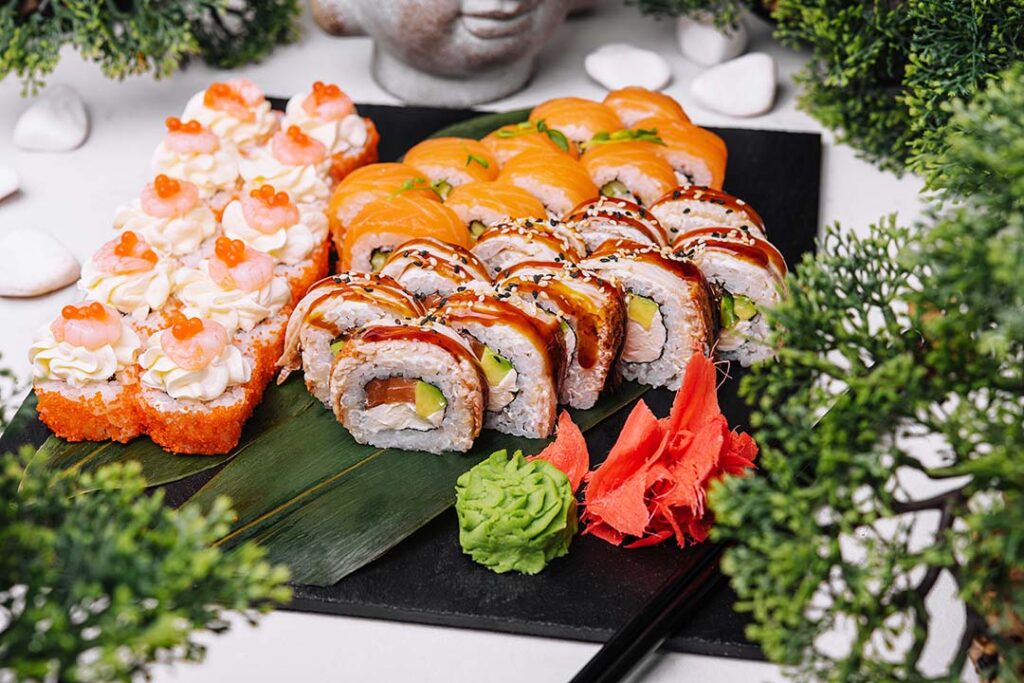Lifestyle
Behind the Beat: The Darker Side of TikTok’s Tunes

In the digital age, where social media platforms reign supreme, TikTok has emerged as a global phenomenon. With its catchy 15-second videos, the platform has captivated millions, from teenagers showcasing their dance moves to chefs sharing quick recipes. However, beneath the surface of viral challenges and lip-sync battles, there are growing concerns about the app’s consequences on society, its potential misuse by the Chinese government, and the reasons why some nations are contemplating a ban.
The Social Impact
At first glance, TikTok seems like a harmless platform for entertainment and creativity. However, as with many social media platforms, it’s not without its dark side. The app’s algorithm, designed to keep users engaged, often exposes them to a repetitive stream of content. This can lead to a skewed perception of reality, where users, especially younger ones, feel pressured to conform to certain standards or trends. The constant need for validation through likes and comments can exacerbate mental health issues, leading to anxiety, depression, and even body dysmorphia.
Moreover, the platform has been criticized for its potential to spread misinformation. The short video format, while engaging, doesn’t always allow for nuanced discussions or fact-checking. As a result, misleading or outright false information can go viral, influencing public opinion on critical issues.
The Political Angle
Governments around the world have raised eyebrows at TikTok, not just because of its societal impact, but due to concerns about data privacy and national security. The app’s parent company, ByteDance, is based in Beijing, which has led to suspicions about the Chinese government’s potential access to user data. In an era where data is the new gold, the implications of such access are vast. It could be used for surveillance, profiling, or even influencing foreign elections.
Several countries have expressed concerns that TikTok could be a tool for the Chinese government to spread propaganda or censor content that doesn’t align with its views. The app’s guidelines have, in the past, been found to suppress content related to topics sensitive to the Chinese Communist Party, such as the Tiananmen Square protests or the situation in Xinjiang.
The Chinese Connection
While TikTok has consistently denied sharing user data with the Chinese government, the very structure of China’s legal system raises concerns. In China, companies are required to cooperate with intelligence agencies if asked. This means that, theoretically, the Chinese government could demand access to TikTok’s vast troves of data, giving them unprecedented insights into the habits, preferences, and behaviors of millions of users worldwide.
Furthermore, the potential for the platform to be used as a soft power tool by Beijing cannot be ignored. By subtly influencing the content that goes viral or suppressing dissenting voices, the narrative can be controlled in a way that portrays China in a favorable light or undermines its adversaries.
TikTok, like many technological innovations, is a double-edged sword. While it offers a platform for creativity and connection, the potential consequences on individual well-being, societal norms, and global politics are profound. As governments grapple with the decision to regulate or ban the app, it’s essential for users to remain informed and critical of the content they consume and share. In the digital age, where the lines between entertainment and influence are increasingly blurred, vigilance is our most potent tool.
Entertainment
Sir Michael Gambon, Renowned ‘Harry Potter’ Actor, Passes Away at 82

Sir Michael Gambon, celebrated for his portrayal of Professor Albus Dumbledore in the Harry Potter film series, has passed away at the age of 82, according to a statement from his family.
Born in Dublin and later becoming a British citizen, Gambon’s illustrious career spanned six decades, encompassing television, film, theatre, and radio. Over the years, he garnered four BAFTA awards and was knighted in 1998 for his contributions to the entertainment industry.
His family shared that the esteemed actor passed away peacefully in a hospital, surrounded by loved ones, after suffering from pneumonia.
Gambon’s journey into the limelight began with a stage performance in Dublin’s production of Othello in 1962. His career trajectory soared when he joined Laurence Olivier’s National Theatre acting company in London, eventually winning three Olivier awards for his roles in the company’s productions.
Beyond his iconic role as Dumbledore, which he assumed after the passing of Richard Harris in 2003, Gambon was recognized for his roles in ITV’s Maigret series, BBC’s The Singing Detective, and films like Gosford Park and The King’s Speech.
Fellow Harry Potter co-star, Fiona Shaw, remembered him as a “magnificent trickster” with unparalleled skill in handling text. Jason Isaacs, who played Lucius Malfoy, recalled Gambon’s “fearless, filthy sense of fun” and his profound impact on Isaacs’ understanding of acting.
Dame Eileen Atkins, a close friend of Gambon, reminisced about his commanding stage presence and his gentle nature, stating, “There was something incredibly sweet inside Michael.”
Gambon’s final stage appearance was in 2012 in a London rendition of Samuel Beckett’s All That Fall.
Tributes have poured in from across the entertainment world, with the Irish Prime Minister, Leo Varadkar, lauding him as a “great actor” who gave his all, whether in Beckett, Dennis Potter, or Harry Potter.
Lifestyle
The Transformative Power of Meditation: Unraveling Myths and Embracing Benefits

Meditation, an ancient practice embraced by cultures worldwide, has recently gained immense popularity in our modern, fast-paced world. As life’s tempo seems to only quicken, many are turning to meditation as a sanctuary from the relentless noise and stress. But what exactly are the positive effects of meditation, and how can one weave it into the fabric of daily life? Coupled with its rising popularity are misconceptions that might deter potential practitioners. Let’s journey into the transformative essence of meditation, dispel the myths, and offer pathways to a more mindful existence.
At its core, meditation is a practice of focused attention and awareness. Over time, consistent meditation can lead to a plethora of benefits, both psychological and physiological. Enhanced cognitive abilities are among the foremost of these benefits. Studies have shown that meditation can increase gray matter density in areas of the brain associated with learning, memory, and emotional regulation. This suggests that regular meditators might experience sharpened focus, better memory retention, and heightened emotional intelligence.
Beyond the mind, meditation also offers solace to the spirit. One of the most well-documented benefits of meditation is its ability to reduce cortisol levels, the body’s primary stress hormone. By doing so, meditation can help alleviate symptoms of anxiety and depression, leading to a more balanced emotional state. And if that wasn’t enough, meditation can also bolster the body’s immune response. By reducing stress and promoting relaxation, the body is better equipped to fend off illnesses.
While the benefits of meditation are clear, the challenge for many is integrating this practice into their daily routines. Starting small is key. One doesn’t need to meditate for hours to reap its benefits. Beginning with just a few minutes each day and gradually increasing the duration as comfort grows can be an effective approach. Creating a dedicated space for meditation can also be beneficial. Finding a quiet corner in your home or office where you can sit comfortably can make entering a meditative state easier over time. And for those who are tech-savvy, the digital age offers a boon. Numerous apps and online platforms provide guided meditations tailored to various needs, from sleep to stress relief. These can be particularly helpful for those just starting their meditation journey.

However, as meditation’s popularity soars, so do misconceptions about the practice. One common myth is that meditation requires complete thoughtlessness. Contrary to this belief, meditation isn’t about eliminating all thoughts but rather observing them without judgment. It’s about cultivating an awareness of the present moment. Another misconception is the notion that one needs to adopt a specific posture or chant specific mantras to meditate effectively. While traditional forms of meditation might emphasize certain postures or chants, the true essence of meditation is mindfulness. One can meditate while walking, lying down, or even during mundane tasks like washing dishes. Lastly, some believe that meditation is inherently religious. While it’s true that meditation is a component of many religious practices, it is, in itself, secular. People of all backgrounds and beliefs can benefit from meditation without any religious connotations.
Meditation offers a myriad of benefits that can profoundly transform one’s life. By understanding its true essence and dispelling prevalent myths, we can harness its power to lead a more balanced, focused, and peaceful existence. Whether you’re a seasoned practitioner or a curious beginner, the journey of meditation is one of continuous discovery and growth.
Health
Learning from Japan: The Secrets to a Healthier Lifestyle

Japan, an archipelago known for its rich history, technological advancements, and unique culture, has another feather in its cap: a reputation for healthy living. The Japanese are often cited for their longevity, low obesity rates, and overall wellness. While there are many factors contributing to this, one of the most significant is their dietary habits. As the West, particularly the US, grapples with rising health concerns, there’s much to be learned from the Japanese way of life.
The Japanese Diet: A Symphony of Balance and Moderation
At the heart of Japanese cuisine is a philosophy of balance and moderation. Unlike the supersized portions often found in Western countries, Japanese meals emphasize portion control. This doesn’t mean they eat less; rather, they consume a variety of foods in smaller quantities. This approach not only ensures a range of nutrients but also prevents overeating.
Rice, a staple in Japanese meals, serves as a foundation. It’s complemented by an array of vegetables, fish, and lean meats. The Japanese have a deep appreciation for seasonal and local produce, which means their meals are not only fresh but also diverse, changing with the seasons.

Another significant aspect of the Japanese diet is their consumption of fish. Rich in omega-3 fatty acids, fish like salmon, mackerel, and sardines are known for their heart-healthy benefits. Contrast this with the Western diet, which often leans heavily on red meats that, when consumed in excess, can contribute to various health issues.
Soups, particularly miso soup, are another staple. Made from fermented soybean paste, miso is rich in probiotics, aiding digestion and promoting gut health. This emphasis on fermented foods, which also includes items like pickled vegetables, introduces beneficial bacteria into the diet.
Beyond the Plate: Mindful Eating and Physical Activity
It’s not just about what the Japanese eat, but also how they eat. The practice of “Hara Hachi Bu,” which translates to “eat until you are 80% full,” is a Confucian teaching that many in Japan abide by. This mindful approach to eating encourages individuals to listen to their bodies, eat slowly, and recognize when they are satiated.
Physical activity is seamlessly integrated into daily life in Japan. Whether it’s walking or cycling to work, practicing traditional arts like Kendo and Karate, or participating in group exercises in parks, the Japanese find ways to stay active. This is in stark contrast to the sedentary lifestyles that have become prevalent in many Western countries.
What Can the West Learn?
For those in the West looking to adopt healthier habits, the Japanese lifestyle offers several takeaways:
- Diversify Your Diet: Instead of sticking to the same foods, explore a variety of vegetables, grains, and proteins. This not only provides a range of nutrients but also keeps meals interesting.
- Embrace Seafood: Consider incorporating more fish into your diet. If you’re not a fan of fish, explore other sources of omega-3s like flaxseeds, walnuts, and chia seeds.
- Mindful Eating: Pay attention to your body’s signals. Eat slowly, savor each bite, and stop when you’re satisfied, not when you’re stuffed.
- Stay Active: Find ways to integrate physical activity into your daily routine, whether it’s taking the stairs, walking more, or picking up a new sport.
While cultural and geographical differences exist, the principles of a balanced diet and active lifestyle are universal. By looking to Japan and understanding their approach to health and wellness, there’s an opportunity for many in the West to make positive changes for a longer, healthier life.
-

 News2 years ago
News2 years agoHuawei’s Bold Move into AI: A New Era or Another Controversy?
-

 Lifestyle2 years ago
Lifestyle2 years agoApple’s Vision Pro: Setting New Standards in VR and AR Technology
-

 Tech2 years ago
Tech2 years agoThe Horizon of Innovation: The 10 Most Promising Future Technologies Shaping Our Tomorrow
-

 News2 years ago
News2 years agoTragic Bus Crash in New York Claims Two Lives; Multiple Students Injured
-

 News2 years ago
News2 years agoEscalation in Ukraine-Russia Conflict: Missile Strikes Target Key Installations in Crimea
-

 Politics2 years ago
Politics2 years agoPoland Halts Arms Shipments to Ukraine Amid Rising Tensions Over Grain Ban
-

 News2 years ago
News2 years agoHouse GOP Faces Deep Divisions Over Government Funding Ahead of Deadline
-

 Health2 years ago
Health2 years agoThe Placebo Effect: A Double-Edged Sword in Modern Medicine
